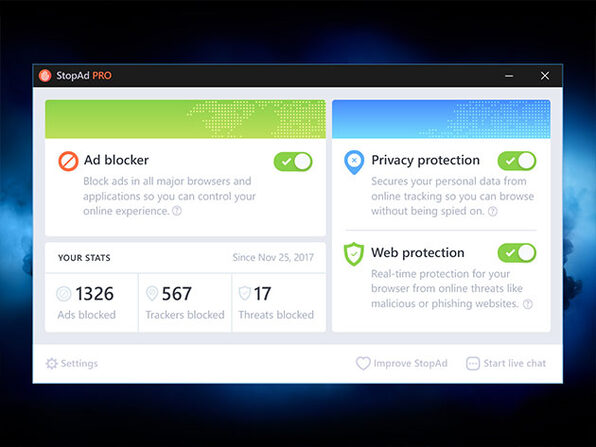

- #SOFTWARE SIMILAR TO STOPAD FULL#
- #SOFTWARE SIMILAR TO STOPAD TRIAL#
- #SOFTWARE SIMILAR TO STOPAD FREE#
Paying ad blocker companies – Compensating ad blockers in some manner so that the publisher’s site is whitelisted.Reinserting ads – Using technology to bypass ad blockers and insert ads from the same or a different source.Requiring payment – Implementing standard subscription models, micropayments or donations, or receiving something else of value (such as responding to a survey) in exchange for access to content.Limiting access or modifying user experience – Placing restrictions on access to content but not denying access altogether.Denying access – Blocking content for anyone using ad blocking technology.Raising awareness – Informing users about how ad revenues are used and asking them not to block ads but taking no action if a user chooses to ignore the message.Some of the tactics described are similar to actions taken in France and those planned by Swedish publishers, while others take a somewhat different approach. In response to the concern about the growing use of ad blocking technologies, the Interactive Advertising Bureau (IAB) recently released a document that put forth several ideas for publishers who want to face the problem head on. That is, would readers really be willing to change their habits or preferences to view a particular site or would they be more likely to go look for the information someplace else?

The trouble with this type of approach to the ad blocking problem is that it would most likely require a mass agreement among publishers to become a real long-term solution.
#SOFTWARE SIMILAR TO STOPAD TRIAL#
The group plans to share its results after the trial to see if any lessons can be learned. Unlike the French media experiment in which some publishers continued to show content even if ad blockers weren’t disabled, Swedish publishers plan to give readers the choice of disabling their ad blocking software, paying to access the content without ads, or viewing lower quality or limited versions of the content. Swedish publishers plan to take similar actions in August. Some of the publishers then refused to show content to anyone using ad blocking software, while others let users continue on to their websites after reading the message.
#SOFTWARE SIMILAR TO STOPAD FREE#
In France, publishers such as Le Monde, L’Equipe, Le Figaro and RTL joined together at the end of March in an effort to try to educate their audiences on how important ad revenue is to their business models.Īfter explaining that ad earnings allowed them to publish free content and pay journalists to cover a wider range of stories, the media outlets asked readers to voluntarily disable their ad blockers while viewing the news sites. Many publishers have already started to feel the crunch and are experimenting with different types of responses, but are their actions having any measurable effect? If this trend continues, publishers who are dependent on ad revenues will need to start looking for new ways to monetize their web properties or find creative solutions to prevent readers from blocking ads. This would be a major shift considering the market has already adjusted for pop-up blockers, but not things like display and programmatic ads.
#SOFTWARE SIMILAR TO STOPAD FULL#
With the inclusion of content blocking extensions for Safari in iOS9 and Microsoft’s recent announcement that it plans to offer full support for third-party ad blocking tools, we may be close to seeing the day when ad blocking is the default setting for certain types of devices and applications.

Now, certain types of ads, such as pop-ups, are blocked by many browsers without the need for any additional software.


 0 kommentar(er)
0 kommentar(er)
